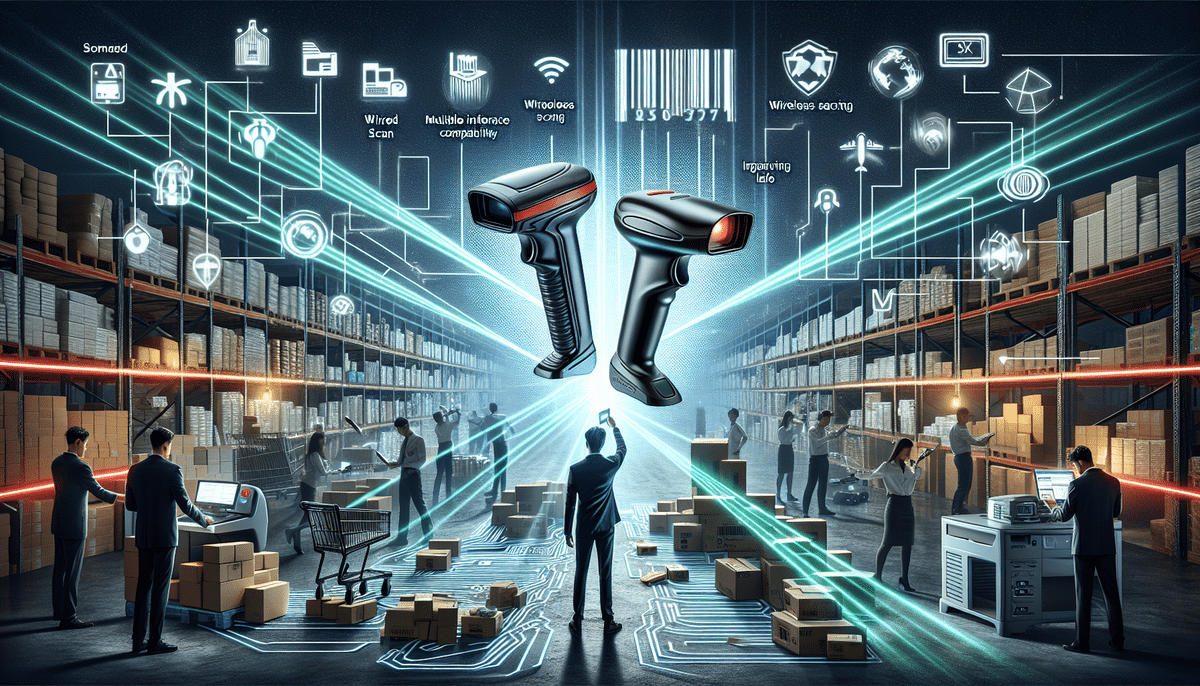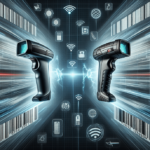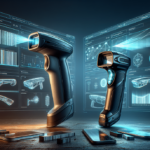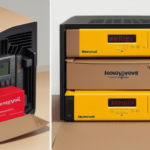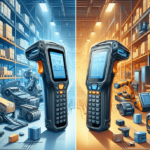Symbol LS2208 (by Zebra) vs Inateck BCST-70: Comprehensive Barcode Scanner Comparison
When selecting a barcode scanner for your business, the options can be overwhelming. Two standout models in the market are the Symbol LS2208 by Zebra and the Inateck BCST-70. This comparison delves into their features, performance, and overall value to help you make an informed decision.
Product Overview
Symbol LS2208
The Symbol LS2208 is a handheld wired barcode scanner favored in retail and various industries for its durability and comfort. It offers a scanning range of up to 17 inches, suitable for close-range needs. According to Zebra's official specifications, the LS2208 is designed for high-volume scanning environments, ensuring reliability and consistent performance.
Inateck BCST-70
In contrast, the Inateck BCST-70 is a wireless scanner that connects via Bluetooth to computers and mobile devices, offering greater portability. It boasts an impressive scanning range of up to 33 feet, making it ideal for expansive environments like warehouses. According to Inateck's product page, the BCST-70 is engineered to meet the demands of dynamic workspaces, providing flexibility and ease of use.
Key Features
Symbol LS2208 Features
- Barcode Compatibility: Reads various 1D and 2D barcodes.
- Durability: Drop-resistant up to 6 feet.
- Scanning Speed: Up to 100 barcodes per second.
- Interfaces: Supports USB, RS-232, and keyboard wedge.
- Installation: Plug-and-play setup without additional software.
The LS2208's ergonomic design ensures comfort during prolonged use, making it a reliable choice for high-volume scanning environments.
Inateck BCST-70 Features
- Wireless Connectivity: Connects via Bluetooth to multiple devices.
- Extended Scanning Range: Up to 35 feet, ideal for large spaces.
- Battery Life: Lasts up to 15 days on a single charge.
- Durability: Drop-resistant up to 6.6 feet and IP67 rated for dustproof and waterproof use.
- Accuracy: Error rate of less than 1 in 500,000.
The BCST-70's lightweight and compact design enhances its portability, making it suitable for dynamic work environments.
Performance and Accuracy
The Symbol LS2208 scans up to 100 times per second, while the BCST-70 scans up to 500 times per second. According to industry research by Business.com, faster scanning speeds can significantly improve efficiency in high-demand settings.
- LS2208: Excellent for standard retail environments with steady scanning needs.
- BCST-70: Suited for high-demand settings requiring rapid and frequent scanning.
Both scanners maintain high accuracy, ensuring reliable data capture across various barcode types, which is crucial for inventory management and sales operations.
Ease of Use and Setup
Setup is straightforward for both models:
- LS2208: Simple plug-and-play with an included setup guide, minimizing installation time.
- BCST-70: Quick-start guide for wireless pairing, allowing for flexible placement without cumbersome cables.
The wireless nature of the BCST-70 offers greater flexibility, reducing cable clutter and enhancing mobility in active workspaces. According to Forbes Tech Council, ease of setup can reduce downtime and improve overall operational efficiency.
Software Integration and Compatibility
Both scanners integrate seamlessly with most POS systems:
- LS2208: Connects via USB for compatibility with various desktop environments, including Windows, Mac, and Linux.
- BCST-70: Bluetooth connectivity for integration with mobile POS solutions and tablets.
Ensuring compatibility with your specific POS system is essential to avoid integration issues. Refer to your POS provider's guidelines to confirm compatibility.
Battery Life and Connectivity
The BCST-70 stands out with its battery capabilities:
- BCST-70: Up to 30 hours of battery life, supporting prolonged usage without frequent recharges.
- LS2208: Powered via cord, eliminating battery maintenance but restricting mobility.
While wireless scanners like the BCST-70 offer enhanced flexibility, it's important to consider battery management and potential connectivity disruptions in your operational environment. Regular maintenance and battery checks can mitigate these concerns.
Pricing and Value
Pricing reflects the feature sets:
- LS2208: Approximately $100, offering reliable performance at a budget-friendly price.
- BCST-70: Around $150, justified by its wireless capabilities and extended range.
Evaluate your business needs to determine which scanner offers the best return on investment. According to Business Insider, investing in the right barcode scanner can streamline operations and reduce long-term costs.
Customer Reviews
Feedback highlights include:
- LS2208 Pros: Ergonomic design, durability, and consistent performance.
- LS2208 Cons: Wired connection can be restrictive in dynamic environments.
- BCST-70 Pros: Wireless convenience, extended range, and long battery life.
- BCST-70 Cons: Potential pairing issues and reliance on battery life for operation.
Both scanners receive positive reviews for their performance, with some preferences based on specific operational needs and environmental factors.
Use Cases
These scanners are versatile across various industries:
- Retail: Efficient inventory management and streamlined checkout processes.
- Healthcare: Accurate patient information and medication tracking.
- Industrial: Inventory control and asset tracking in warehouses and manufacturing facilities.
Choosing the right scanner depends on your environment's specific requirements for mobility, range, and integration. For instance, a retail store might benefit more from the LS2208's reliability, while a warehouse might find the BCST-70's extended range and wireless features more advantageous.
Conclusion
The choice between the Symbol LS2208 and Inateck BCST-70 depends on your business needs:
- Choose LS2208 if: You need a durable, wired scanner with broad OS compatibility at a lower cost.
- Choose BCST-70 if: You require wireless functionality, extended scanning range, and integration with mobile devices.
Both scanners offer reliable performance, ensuring your business operations run smoothly with accurate barcode scanning.
For more information and to purchase, visit our barcode scanners page.















